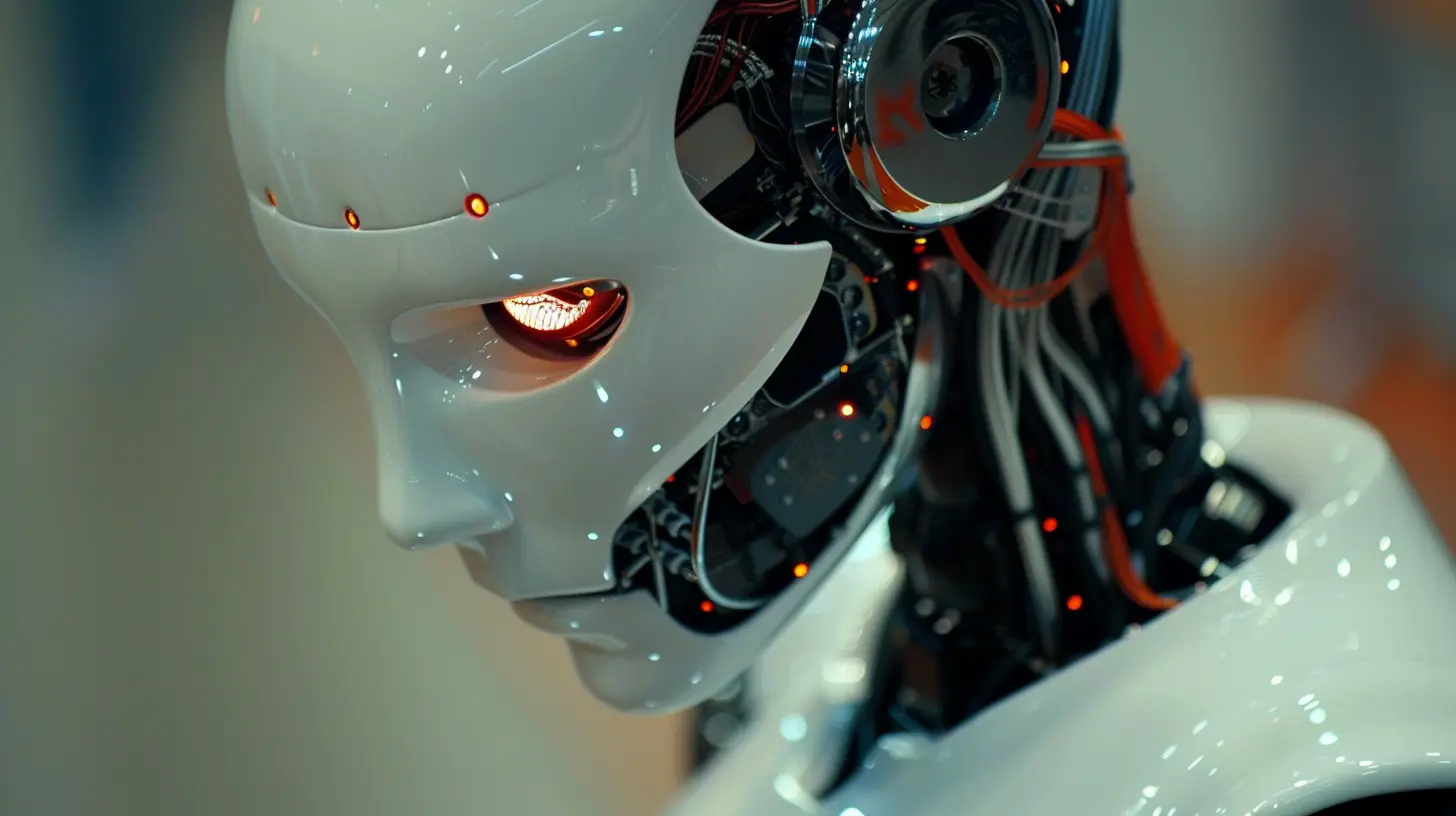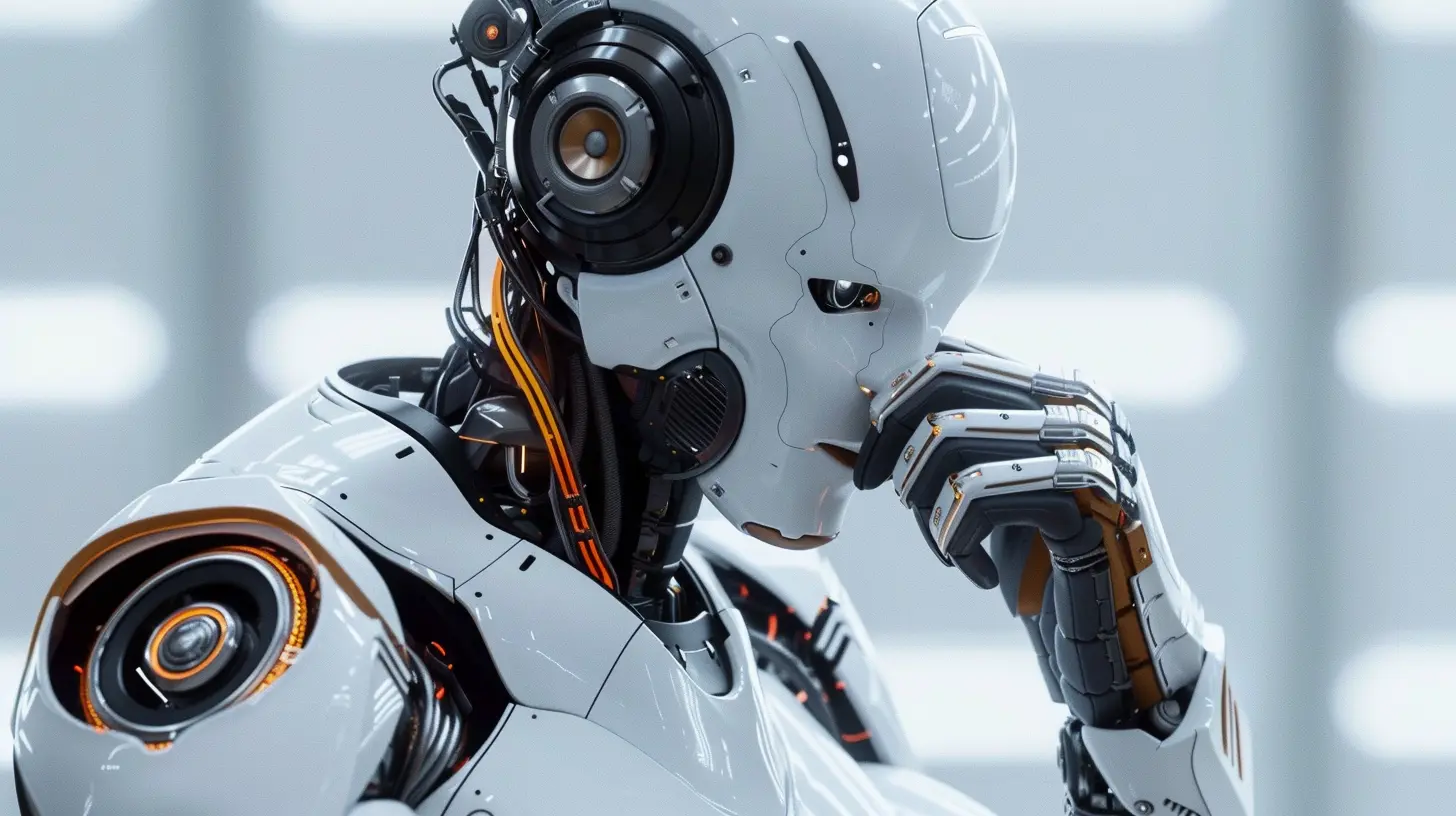Understanding Machine Learning: The Backbone of AI
2 September 2025
Artificial Intelligence (AI) is rapidly transforming our world, but at the heart of this revolution is Machine Learning (ML). It’s the brain behind AI, enabling machines to learn from data, recognize patterns, and make decisions—without being explicitly programmed.
But what exactly is machine learning? How does it work? And why is it so crucial to the future of technology? Let’s break it down in simple terms while keeping things engaging and informative.

What Is Machine Learning?
Imagine teaching a child how to recognize cats. Instead of explaining every single feature of a cat, you show them thousands of cat pictures. Over time, they start identifying cats on their own, even if they come across a breed they’ve never seen before. That’s exactly how machine learning works!Machine Learning is a subset of AI where computers learn from data and improve their performance over time. Instead of following rigid rules, an ML model finds patterns in massive datasets and uses them to make predictions or decisions.

How Does Machine Learning Work?
Machine learning works through a process similar to how humans learn from experiences. It involves:1. Data Collection – Gathering data (text, images, numbers, etc.) relevant to the problem.
2. Data Processing – Cleaning and organizing the data for training.
3. Model Training – Feeding data into an algorithm that learns patterns.
4. Model Evaluation – Testing how accurately the model makes predictions.
5. Deployment & Improvement – Using the model in real-world applications and refining it over time.
The more data a model has, the better it becomes at recognizing patterns and making accurate predictions—just like how practice makes us better at any skill.

Types of Machine Learning
Not all ML models learn the same way. There are three primary types of machine learning:1. Supervised Learning
Supervised learning is like a student learning under a teacher’s guidance. The model is trained using labeled data—meaning each input already has a corresponding correct output. For example, if we want an ML model to recognize spam emails, we first feed it a dataset where emails are labeled as "spam" or "not spam."Common Applications:
- Email spam filters
- Fraud detection
- Speech recognition
2. Unsupervised Learning
This type is like a child exploring without any instruction. The model is trained on unlabeled data, meaning it has to find patterns on its own. It groups similar data points together based on their characteristics.Common Applications:
- Customer segmentation (grouping similar customers for marketing)
- Anomaly detection (finding fraud in transactions)
- Recommendation systems (like Netflix suggesting movies)
3. Reinforcement Learning
Reinforcement learning (RL) is like training a dog with rewards and punishments. The model learns by interacting with an environment and receiving positive or negative feedback. Imagine teaching a robot to walk—it tries different movements, learns from mistakes, and eventually figures it out.Common Applications:
- Self-driving cars
- Game-playing AI (like AlphaGo and Chess AI)
- Robotics

Why Is Machine Learning Important?
Machine learning is revolutionizing industries by automating processes, improving decision-making, and creating smarter technology. Let’s look at some of the key reasons why ML is a game-changer:1. Automation of Tasks
ML algorithms can handle repetitive, time-consuming tasks, freeing up humans for more creative and strategic work.2. Personalization
From Netflix recommendations to personalized shopping, ML enhances user experiences by tailoring services based on preferences.3. Improved Decision-Making
Businesses rely on ML to analyze vast amounts of data and make data-driven decisions, improving efficiency and accuracy.4. Enhanced Security
ML helps detect cyber threats, identify fraud, and enhance security systems by analyzing patterns of attacks.Key Machine Learning Algorithms
Just as there are different types of learning, there are various machine learning algorithms. Here are some of the most commonly used ones:1. Linear Regression
Used for predicting numerical values, like housing prices based on square footage.2. Decision Trees
A tree-like structure that helps in decision-making by splitting data based on conditions.3. Random Forest
An extension of decision trees that combines multiple trees to improve accuracy.4. Neural Networks
Modeled after the human brain, neural networks power deep learning applications like image and speech recognition.
Challenges in Machine Learning
While ML is powerful, it’s not without challenges. Some issues include:- Data Quality – ML models are only as good as the data they are trained on. Poor-quality data leads to unreliable results.
- Bias in Algorithms – If the training data is biased, the model’s predictions may also be biased.
- Computational Power – Training complex ML models requires massive computing resources.
- Interpretability – Some ML models, especially neural networks, work like "black boxes" where it’s hard to explain their decision-making process.
Real-World Applications of Machine Learning
Machine learning is shaping the future in countless ways. Here are some industries where ML is making a significant impact:1. Healthcare
- Predicting diseases based on medical records- Assisting doctors in diagnosing illnesses
- Drug discovery and development
2. Finance
- Detecting fraudulent transactions- Algorithmic stock trading
- Loan approval automation
3. Retail & E-Commerce
- Personalized product recommendations- Inventory management
- Chatbots for customer support
4. Autonomous Vehicles
- Self-driving technology- Traffic prediction and route optimization
- Driver assistance systems
5. Entertainment
- AI-generated music and art- Video streaming recommendations
- Realistic gaming AI
The Future of Machine Learning
Machine learning is evolving rapidly, and its future looks even more promising. Some trends shaping the future of ML include:- Edge ML – Running ML models directly on devices like smartphones and IoT gadgets without relying on cloud computing.
- Explainable AI (XAI) – Making ML models more interpretable and less of a "black box."
- AI Ethics – Ensuring fair and unbiased AI decision-making.
- Quantum Machine Learning – Leveraging quantum computing to solve complex ML problems faster.
Final Thoughts
Machine learning is no longer just a fascinating concept—it’s the backbone of modern AI. From personalized recommendations to self-driving cars, ML is transforming every aspect of our lives. While challenges exist, continuous advancements will push ML to even greater heights, making our world smarter and more efficient.So, next time Netflix suggests your favorite show or your phone recognizes your voice, remember—it’s all thanks to the power of machine learning!
all images in this post were generated using AI tools
Category:
Artificial IntelligenceAuthor:

Jerry Graham
Discussion
rate this article
1 comments
Poppy McIlroy
This article beautifully simplifies the complexities of machine learning and its vital role in AI. It's inspiring to see how technology continues to evolve and impact our lives. Thank you for shedding light on this important topic and making it accessible to everyone. Keep up the great work!
September 8, 2025 at 3:11 AM

Jerry Graham
Thank you for your kind words! I'm glad you found the article helpful in understanding machine learning's role in AI. Your encouragement means a lot!


